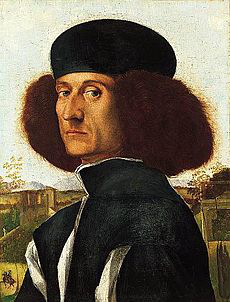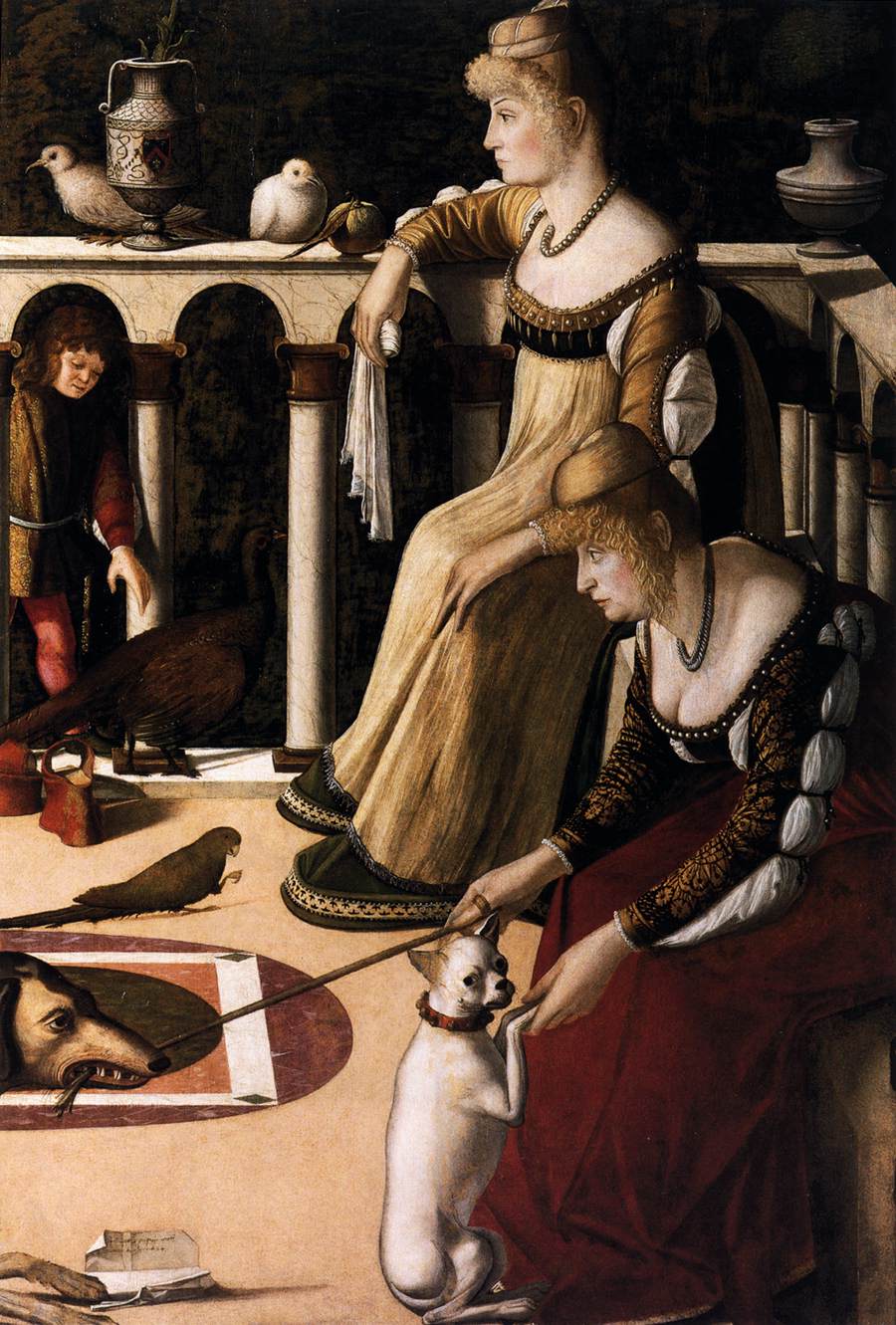What does the name Carpaccio tell you? No, it’s not finely chopped pieces of meat that you buy at the nearest store before the holidays. Although the word “subtle” is absolutely appropriate to the manner of a painting of this amazing artist of the Renaissance.
Vittore Carpaccio, from an early age, was close to fine art. First, he was born and raised in Venice. No one knows the exact date of his birth, but the researchers allocate a gap from 1455 to 1465. His father was a successful furrier and had a shop in St. Mark’s Square, which indicated his large incomes. Secondly, young Vittore was in the studio of Giovanni Bellini, an outstanding artist of the Venetian school of painting.
According to the successful definition of one of the scientists, the main achievement of the Renaissance was the discovery of peace and man. The art has never been known before so wide a scope in depicting the most varied aspects of reality. Consistently preserving the idea of the wholeness and harmony of the universe, the Renaissance artists, at the same time, enthusiastically depicted the paintings of the surrounding nature, the person indirectly life genre situations.
Biography
The biography of Vittore Carpaccio is very interesting. For the Venetian, Carpaccio served the reality as an inexhaustible source of creative inspiration. After training with Gentile Bellini, the artist came out on his own at the moment when Venice was promoted to the number of leading art schools in Italy. And even then its main features were defined: the poetic vision of the world, admiration for its beauty and diversity, the colorful richness of its picturesque transformation.
Vittore Carpaccio was not only a talented painter but also a very educated man for his time. He painted pictures on biblical subjects and myths and sometimes left them inscriptions in the ancient Aramaic language.
Vittore Carpaccio is a born narrator, passionately narrating about the beauty of his native Venice, about the life of her citizens. A vivid example of this is one of the earliest works of the artist – the cycle, created paintings in the 1490s “The Life of St. Ursula “(Venice, Academy). The medieval legend appears before the viewer in large monumental canvases as a beautiful spectacle, fascinating with various details. Vittore Carpaccio moves the action to the modern situation of Venice, and it is the living city with its embankments, canals, and gondolas that becomes the background on which nine scenes of the legend unfold. The most poetic artwork of them is “St. Ursula. » In the spacious room of the Venetian Palace, an angel comes in quietly, carrying the message of a young girl sleeping on the bed. On the windows, there are flowers in large beautiful vases, in the corner, there is a table with books. All these details correspond to the state of peace and sincere feeling that reigns in the picture.
Key Ideas in painting
Vittore Carpaccio was a contemporary painter of the great Venetian artists of the High Renaissance, but he himself continued to create drawings in the 16th century, imbued with a spirit of the fairy-tale and naive narrative. In the first decade of the 16th century in his biography, he performed three series of drawings, of which famous paintings for Scuola San Giorgio degli Schiavoni in Venice are particularly well known. They reproduce scenes from the life of the saints Jerome and George. In “The Battle of St. George” the saint is represented by a beautiful blond knight, fearlessly hitting the spear of a fairy dragon. The hero is greeted in the city square by a bright oriental crowd in colorful costumes in the scene of “The Triumph of St. George “. The elders in turbans and expensive embroidered dressing gowns, various women’s costumes, their fancy headdresses – all this was seen by the artist on the streets of Venice, which led a lively trade with the countries of the East.
Famous paintings made by Vittore Carpaccio
The wonderful gift of the Vittore Carpaccio-narrator brightly revealed itself in the scenes from the life of St. Hieronymus. In a quiet monastery courtyard, where recently monks used to walk peacefully, Jerome appeared, leading on a leash to the lion loyal to him. This causes a general panic, and the monks fled in fear. The artist enthusiastically unfolds this event in front of the spectator in his work, not forgetting about a lot of expressive details. But as an artist of the Renaissance epoch Vittore Carpaccio in the composition “St. Jerome in the cell “follows the humanistic ideals of his time. The room in which the saint is depicted resembles not the cell, but rather the study of the scientist. Lying all over the place, on shelves and in lockers, books speak of the concentrated solitary life of Jerome. The objects are depicted in the artwork not only accurately characterize the situation, but also warmed by the inner human heat. However, the painter is not limited to a simple description. Falling from the high window to the right, the light transforms the interior, filling it with a sublime spiritualized feeling. This ability of poetizing reality is evidence of the great creative talent of the painter. Carpaccio was, in fact, one of the first genre painters of Western European famous paintings, and within the limits of the Venetian school, he opened the way to a whole galaxy of masters who sang in their work the unique poetic beauty of their native Venice.
Carpaccio created a series of nine paintings, over which he worked for eight years. On each work, canvas draws attention carefully to the details. And although the series tells us a story from the Christian past, it is possible to study the interiors, decor and everyday life of a modern Italian artist in detail. Striking for those times the scale of the paintings, the abundance of characters and religious pathos captured the minds of convinced Venetian Catholics, which made the name of a rapidly growing artist.
Vittore Carpaccio created a number of large-scale paintings dedicated to Christian saints. He also has portraits, among which the “Young Knight” was particularly fond of the public. The work is unusual in that it was the first full-length portrait in the history of European painting.
Carpaccio also turned out to be the author of the portrait, whose characters were mistakenly mistaken. In the XIX century, the famous English art theorist John Ruskin drew attention to the artwork of Carpaccio “Two Venetians.”
Due to overly frank toilets, Ruskin considered that the artwork shows prosperous Venetian courtesans.








